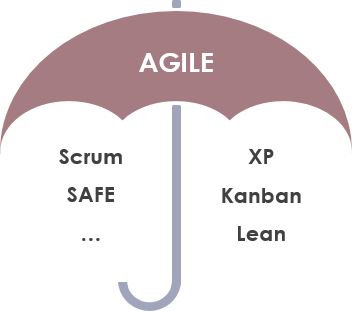In the world of project management, two terms are often used interchangeably: Scrum and Agile. While both Scrum and Agile are popular frameworks for managing projects, they are not the same thing. In this article, we’ll explore the differences between Scrum and Agile, and help you understand which framework is best for your project.

What is Agile?
Agile is a broad term that refers to a set of values and principles for managing projects. The Agile Manifesto, which was created in 2001, defines Agile as a way of working that values:
- Individuals and interactions over processes and tools
- Working software over comprehensive documentation
- Customer collaboration over contract negotiation
- Responding to change over following a plan
Agile is a flexible and iterative approach to project management that emphasizes collaboration, continuous improvement, and delivery of working software in short cycles.
What is Scrum?
Scrum is a specific framework for implementing Agile principles. It was developed in the 1990s by Jeff Sutherland and Ken Schwaber, and is based on the principles of the Agile Manifesto. Scrum is a more structured approach to Agile, with specific roles, ceremonies, and artifacts.
Scrum is a framework for managing and completing complex projects using iterative and incremental practices. It emphasizes teamwork, accountability, and iterative progress toward well-defined goals.
Key differences between Scrum and Agile
While both Scrum and Agile are iterative and incremental approaches to project management, there are some key differences between the two:
- Structure: Agile is a broad term that encompasses a range of frameworks and methodologies, while Scrum is a specific framework with a defined set of roles, ceremonies, and artifacts.
- Roles: Agile does not define specific roles, while Scrum defines three roles: Product Owner, Scrum Master, and Development Team.
- Ceremonies: Agile does not define specific ceremonies, while Scrum defines three ceremonies: Sprint Planning, Daily Scrum, and Sprint Review.
- Artifacts: Agile does not define specific artifacts, while Scrum defines three artifacts: Product Backlog, Sprint Backlog, and Increment.
- Iterative approach: Both Agile and Scrum are iterative approaches, but Scrum is more structured and prescriptive in its approach.
When to use Scrum vs. Agile
So, when should you use Scrum vs. Agile? Here are some guidelines:
- Use Scrum when:
- You need a more structured approach to Agile.
- You have a complex project with multiple stakeholders and dependencies.
- You need to deliver working software in short cycles.
- Use Agile when:
- You need a more flexible approach to project management.
- You have a small team or a simple project.
- You need to respond quickly to changing requirements.
Conclusion
In conclusion, while both Scrum and Agile are popular frameworks for managing projects, they are not the same thing. Scrum is a specific framework for implementing Agile principles, with a defined set of roles, ceremonies, and artifacts. Agile is a broader term that encompasses a range of frameworks and methodologies.
By understanding the differences between Scrum and Agile, you can choose the best approach for your project and deliver working software that meets your customers’ needs.
References
1. Scrum Basics and Concepts
- What is Scrum?
- Scrum Roles
- Scrum Artifacts
- Scrum Events
2. Scrum Planning and Estimation
- Backlog Management
- Estimation
3. Scrum Process and Ceremonies
- Sprint Management
- Scrum Ceremonies